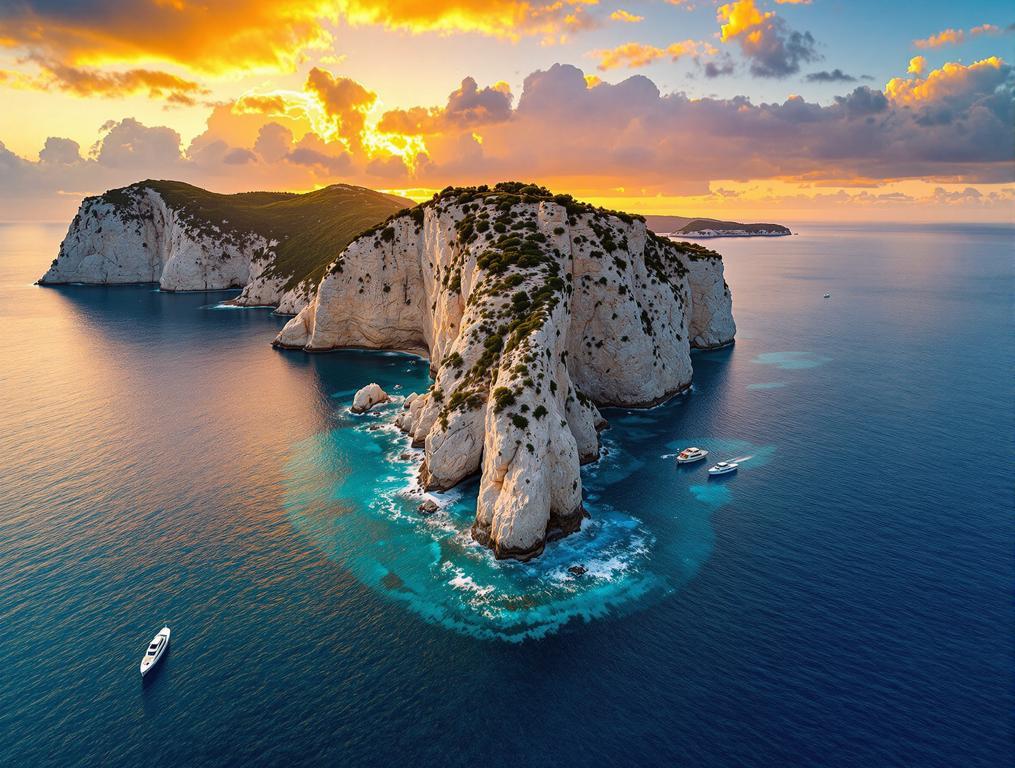The steep limestone wall rises vertically from the Mediterranean, a fortress of rock crowned by scrubby vegetation. From my vantage point at Malta’s Dingli Cliffs, I’m squinting at a forbidden dot in the blue expanse. This is Filfla, Malta’s southernmost island with zero permanent residents and more restricted access than a military installation. At just 3.7 hectares (about 9 acres), this uninhabited speck holds more endemic species per square meter than most nature reserves a hundred times its size.
The local guide next to me laughs when I ask about visiting. “Nobody goes to Filfla,” he says with reverence rather than regret. “Not even most Maltese have been within a kilometer of it.”
Malta’s Most Extreme Island: 60-Meter Cliffs Guard a Zero-Population Wildlife Fortress
Filfla stands just 5 kilometers off Malta’s southern coast, yet remains one of the Mediterranean’s most inaccessible islands. Rising 60 meters from the sea, its sheer cliffs create a natural fortress that has kept humans at bay for centuries.
The island’s name itself holds secrets – derived from the Arabic word “filfel” meaning pepper, a nod to its small, dark silhouette resembling a peppercorn on the horizon. Long before tourists flocked to Malta’s beaches, this tiny islet served a darker purpose.
“Until 1971, the Royal Navy used Filfla as a bombing target,” explains my guide, pointing to the flat plateau atop the island. “The practice scarred the landscape, but ironically created the perfect conditions for endemic species to thrive in isolation.”
Today, unexploded ordnance warnings keep casual visitors away, while Malta’s strictest environmental protection laws maintain Filfla’s pristine state. Similar to Arizona’s military history sites, Filfla bears the scars of military operations, yet nature has reclaimed it with remarkable resilience.
From Bombing Range to Bird Paradise: How Filfla Defies Mediterranean Development
While 8,000 tourists might crowd Malta’s famous Blue Lagoon on a summer day, Filfla hosts an entirely different population: 5,000-8,000 breeding pairs of European storm petrels. These seabirds represent just one of three species that nest on this uninhabited rock.
The contrast with Malta’s developed coastline couldn’t be starker. Like California’s protected ecosystems, Filfla represents a last stand for unique species found nowhere else on Earth.
“We’ve watched tour boats circle Malta’s coast for decades, but Filfla remains untouched – it’s our reminder that some places should remain wild. When we explain to tourists why they can’t visit, they understand its value even more.”
The island hosts not just birds but also the Filfla wall lizard and a rare door snail species, both endemic to this tiny rock. These creatures survive nowhere else on the planet, making this minuscule island a biodiversity hotspot of global importance.
Unlike the Falkland Islands seabird sanctuary which allows limited human presence, Filfla takes protection to the extreme with zero permanent residents and permits granted only for scientific research.
What The Guidebooks Won’t Tell You
While setting foot on Filfla remains impossible for tourists, there are still ways to experience its allure. The best viewpoint is from Dingli Cliffs on Malta’s main island, particularly at sunset when the silhouette stands in dramatic relief against the reddening sky.
For those wanting a closer glimpse, Heritage Malta occasionally organizes scientific boat tours that circle the island at a respectful distance. These rare excursions depart from Sliema Harbor and cost €45-60 per person, but sell out months in advance.
Photographers should bring a telephoto lens of at least 300mm to capture details from both boat tours and cliff viewpoints. The most dramatic lighting occurs during June and July when the angle of sunset perfectly illuminates the western cliffs.
For those fascinated by Malta’s protected ecosystems but unable to glimpse Filfla, the Għadira Nature Reserve on the main island offers a more accessible taste of Malta’s conservation efforts.
Mediterranean’s Most Extreme Biodiversity: 3 Species Found Nowhere Else on Earth
What makes Filfla truly remarkable is its biodiversity density. On just 3.7 hectares, it supports more endemic species per square meter than many islands a hundred times its size.
Standing at Dingli Cliffs watching the distant silhouette, I’m reminded of what my wife Sarah often says about photography – sometimes the most powerful images are those capturing places we can never fully reach.
In a Mediterranean increasingly defined by development and tourism, Filfla remains Malta’s untamed peppercorn – a tiny dark speck in the blue that reminds us that preservation sometimes means keeping our distance. The island doesn’t invite you to visit; it challenges you to protect what remains wild from afar.
